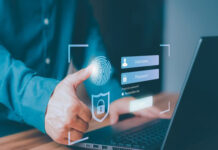With an increased reliance on a digital ecosystem, comes an increased risk of cybercrime and data leaks. Businesses, regardless of their size and industry, are vulnerable to cyberattacks. Hackers are getting more sophisticated, and exploiting vulnerabilities in the systems to their advantage. The threat landscape is constantly evolving, and organisations must update their cybersecurity strategies to better protect their data. This article will outline organisational strategies for protecting their data and preventing cyberattacks.
Challenges faced by the industry:
According to a report by the Computer Emergency Response Team (CERT-In), India has seen a significant increase in cybercrime. In 2023, the volume of cybercrime is expected to continue to rise, driven by the growing number of Internet users. Further, the popularity of online transactions, and the rapid adoption of new technologies. The report states that the most common types of cybercrime in India include phishing, vishing, and smishing scams. Further, cyber extortion, data breaches, and cyberstalking. Insufficient security measures, unsecured networks, third-party vendors, unpatched software, malicious insiders, and the lack of an incident response plan are some of the main reasons for the rise of cybercrime in India.
Reasons for the cybercrimes and the solutions:
With the hybrid work model, organisations are using a combination of on-premises and cloud-based systems. This, however, has made organisations more vulnerable to cyber-attacks by creating multiple access points. Moreover, multiple storage locations make it difficult to identify security loopholes and secure data.
Other challenges include internal threats. Due to a lack of strong data security policies, employees often inadvertently leak sensitive data. This can be due to weak passwords, inability to log out of systems, or a lack of encryption. While it’s easy to blame external threats, internal threats often prove to be a greater danger. Employees often have access to classified data, and if not properly trained, they can pose serious threats. Any data that gets leaked due to internal inefficiencies, raises grave concerns regarding privacy. Further, an organization’s ability to secure customer data. Organisations must implement robust security measures, such as multi-factor authentication, encryption and regular security updates across all systems. Also, organisations must have incident response plans in place to mitigate the damage of any cyber security incidents.
Trends followed by the industry:
The cybersecurity industry is adopting various measures to combat security issues. One of the most important developments in the field is the use of Role-based Access Control (RBAC). It is a method of controlling access to computer systems and applications based on the roles and responsibilities of the users within an organisation. This method is commonly used in the field of cybersecurity to ensure that only authorised individuals have access to sensitive information and systems. RBAC allows organisations to assign specific roles to users and then assign permissions and access rights to those roles. It ensures that users only have access to the information and systems that they need to perform their job functions.
Also, the use of artificial intelligence (AI) and machine learning (ML) helps to detect and prevent malicious activities by controlling access to systems and monitoring user activities. These technologies can be used to improve the accuracy of intrusion detection systems and automate the response to security threats. Another key trend in cyber security is the use of cloud-based security solutions. They provide a more flexible and scalable approach to data protection and include built-in security features, such as encryption and access controls.
Zero Trust security model:
The adoption of the Zero Trust security model has also impacted the cybersecurity industry at a major level. Zero Trust is a security model that assumes that all users, devices, and networks are untrusted by default and must be verified before access to sensitive information is granted. The model is becoming more popular as it does not rely on traditional security measures, such as firewalls and VPNs, which can be easily bypassed by attackers. Instead, it focuses on verifying the identity of the user or device and limiting access to sensitive information based on the level of trust.
Moreover, organisations are turning to Security Automation and Orchestration (SAO) solutions, which automate the response to security threats and enable security teams to respond to incidents more quickly and effectively.
Protecting against data leaks and unauthorised access requires a comprehensive approach that includes implementing robust cybersecurity measures, strict access controls, and staying up to date with the latest trends and technologies. By adopting these measures, organisations can protect their data better and keep their sensitive information secure.
About the author:

Navin William, Sr. Director – Delivery & Product Engineering at Qentelli.















